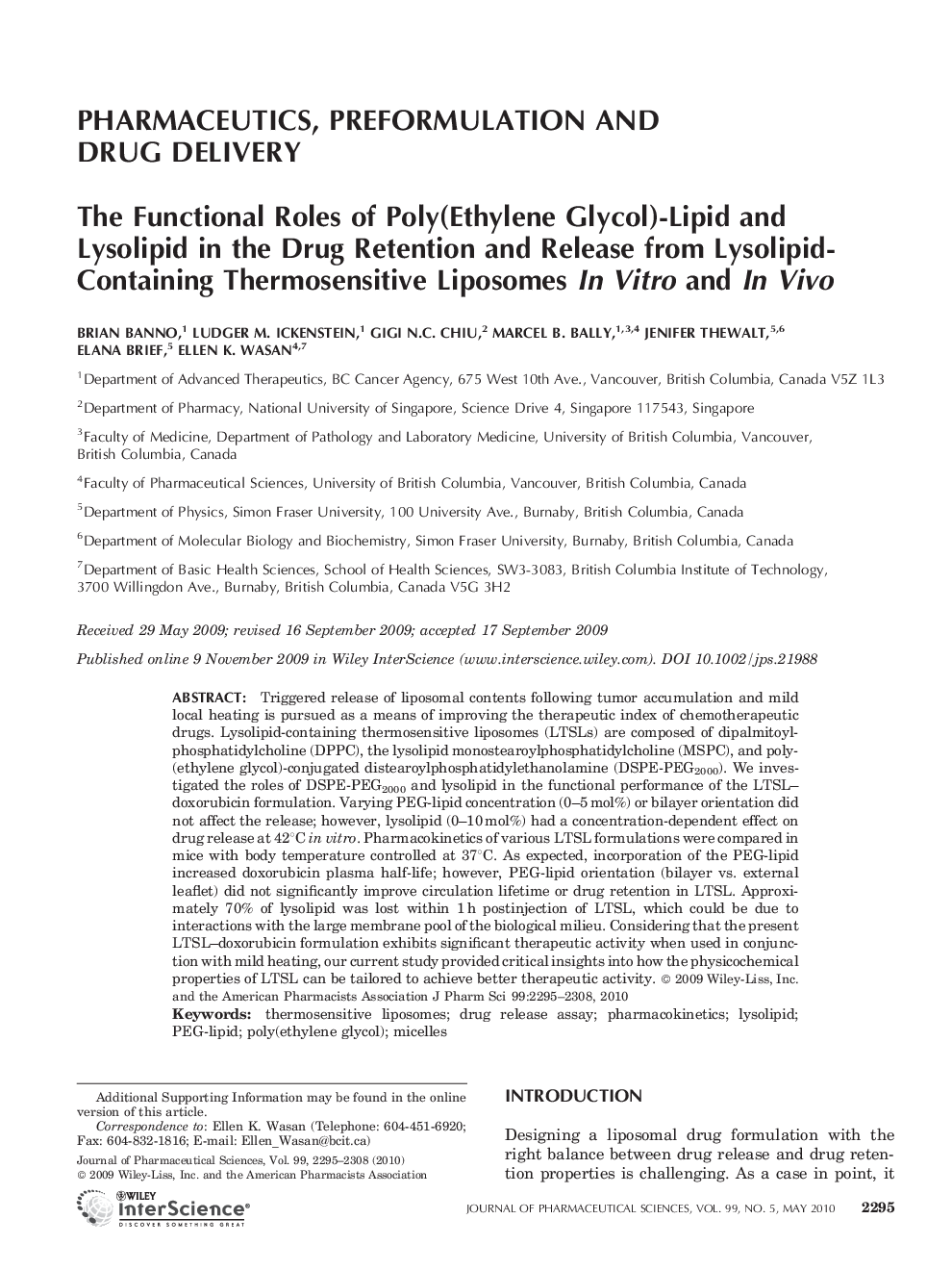| Article ID | Journal | Published Year | Pages | File Type |
|---|---|---|---|---|
| 2485900 | Journal of Pharmaceutical Sciences | 2010 | 14 Pages |
Abstract
Triggered release of liposomal contents following tumor accumulation and mild local heating is pursued as a means of improving the therapeutic index of chemotherapeutic drugs. Lysolipidâcontaining thermosensitive liposomes (LTSLs) are composed of dipalmitoylphosphatidylcholine (DPPC), the lysolipid monostearoylphosphatidylcholine (MSPC), and poly(ethylene glycol)âconjugated distearoylphosphatidylethanolamine (DSPEâPEG2000). We investigated the roles of DSPEâPEG2000 and lysolipid in the functional performance of the LTSL-doxorubicin formulation. Varying PEGâlipid concentration (0-5âmol%) or bilayer orientation did not affect the release; however, lysolipid (0-10âmol%) had a concentrationâdependent effect on drug release at 42°C in vitro. Pharmacokinetics of various LTSL formulations were compared in mice with body temperature controlled at 37°C. As expected, incorporation of the PEGâlipid increased doxorubicin plasma halfâlife; however, PEGâlipid orientation (bilayer vs. external leaflet) did not significantly improve circulation lifetime or drug retention in LTSL. Approximately 70% of lysolipid was lost within 1âh postinjection of LTSL, which could be due to interactions with the large membrane pool of the biological milieu. Considering that the present LTSL-doxorubicin formulation exhibits significant therapeutic activity when used in conjunction with mild heating, our current study provided critical insights into how the physicochemical properties of LTSL can be tailored to achieve better therapeutic activity. © 2009 WileyâLiss, Inc. and the American Pharmacists Association J Pharm Sci 99: 2295-2308, 2010
Related Topics
Health Sciences
Pharmacology, Toxicology and Pharmaceutical Science
Drug Discovery
Authors
Brian Banno, Ludger M. Ickenstein, Gigi N.C. Chiu, Marcel B. Bally, Jenifer Thewalt, Elana Brief, Ellen K. Wasan,
